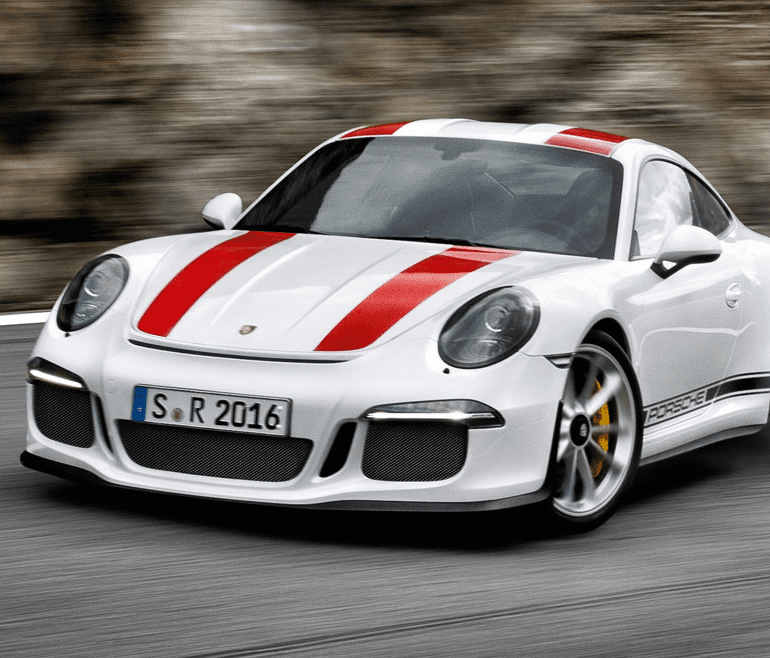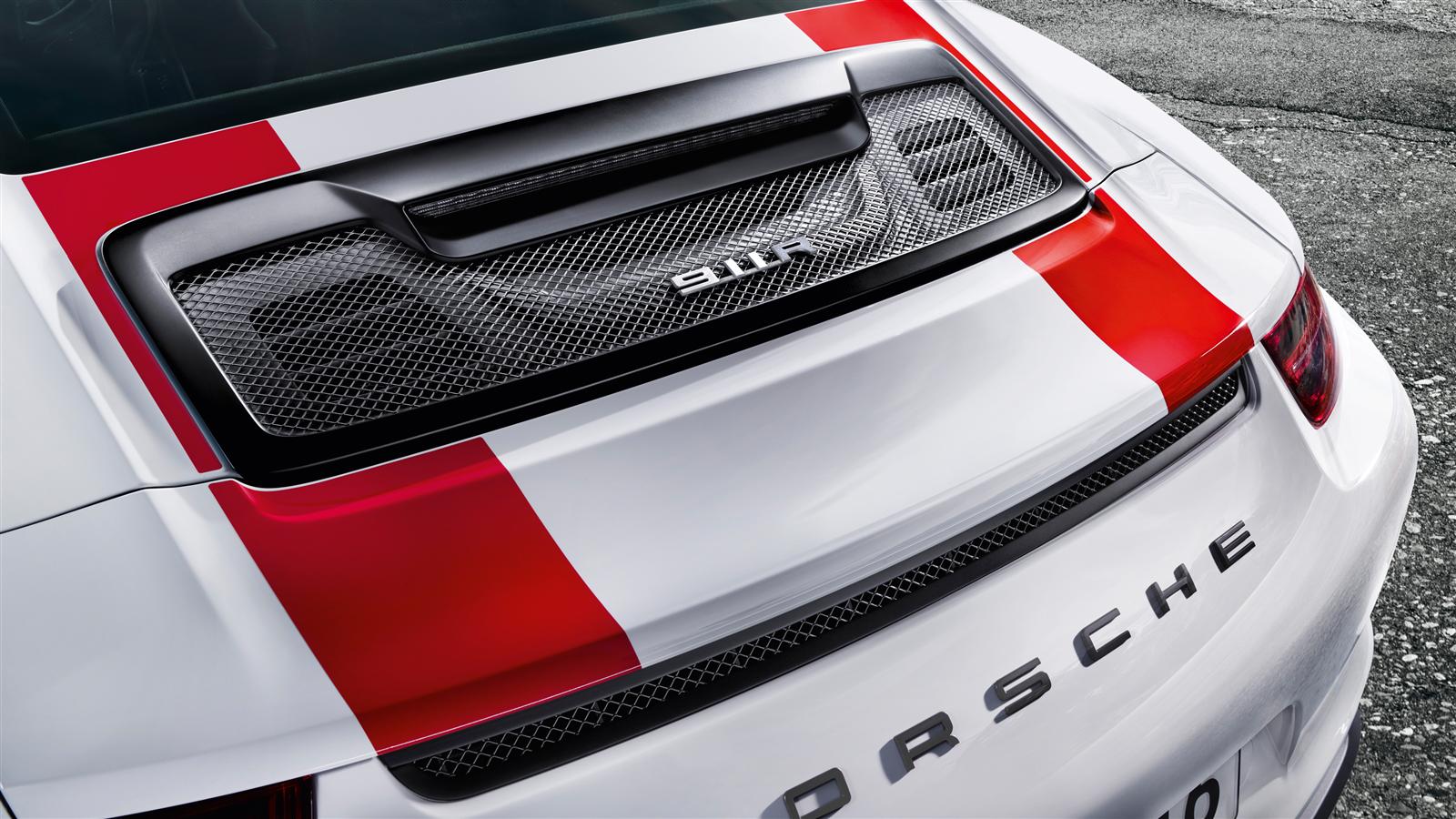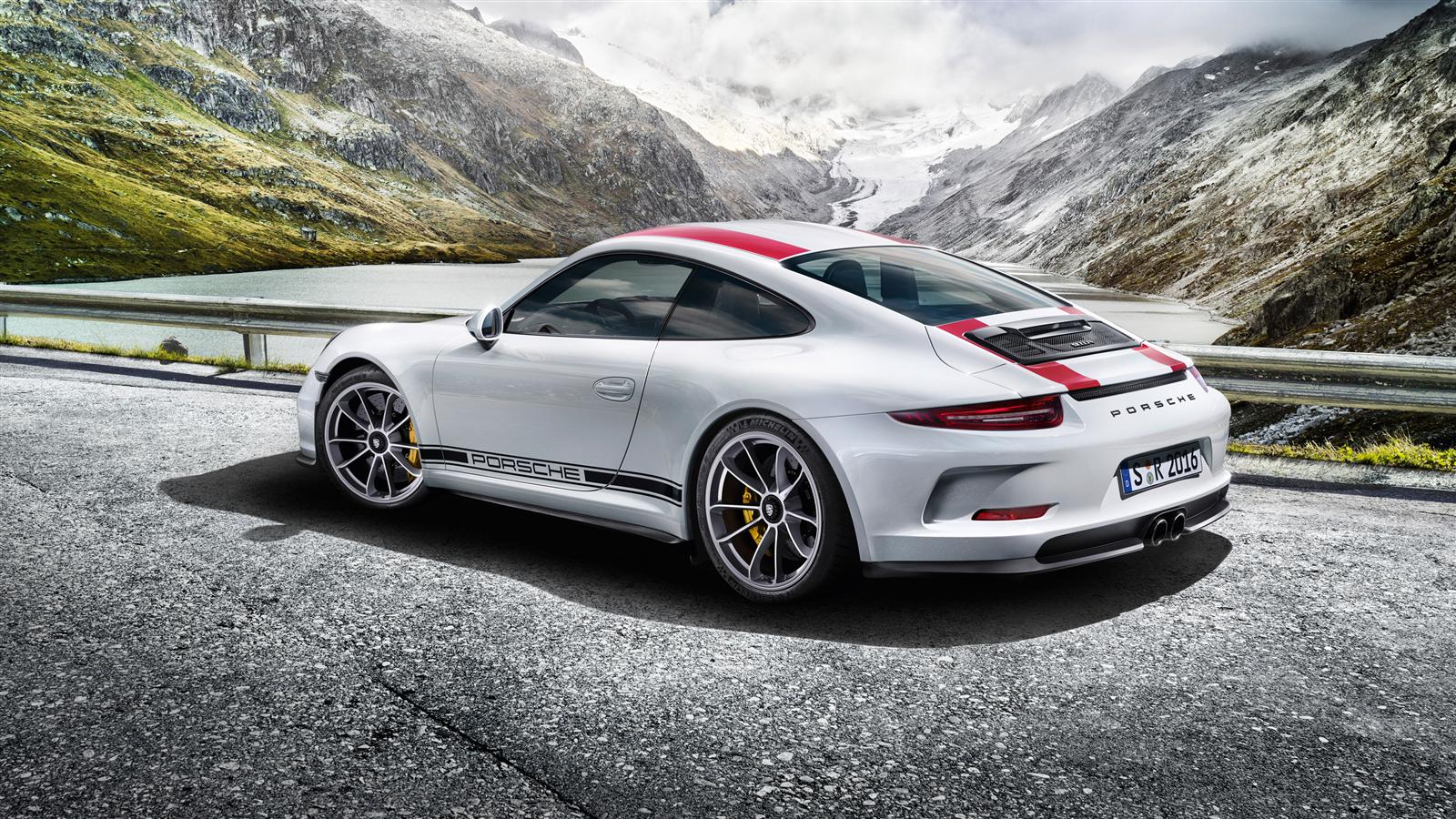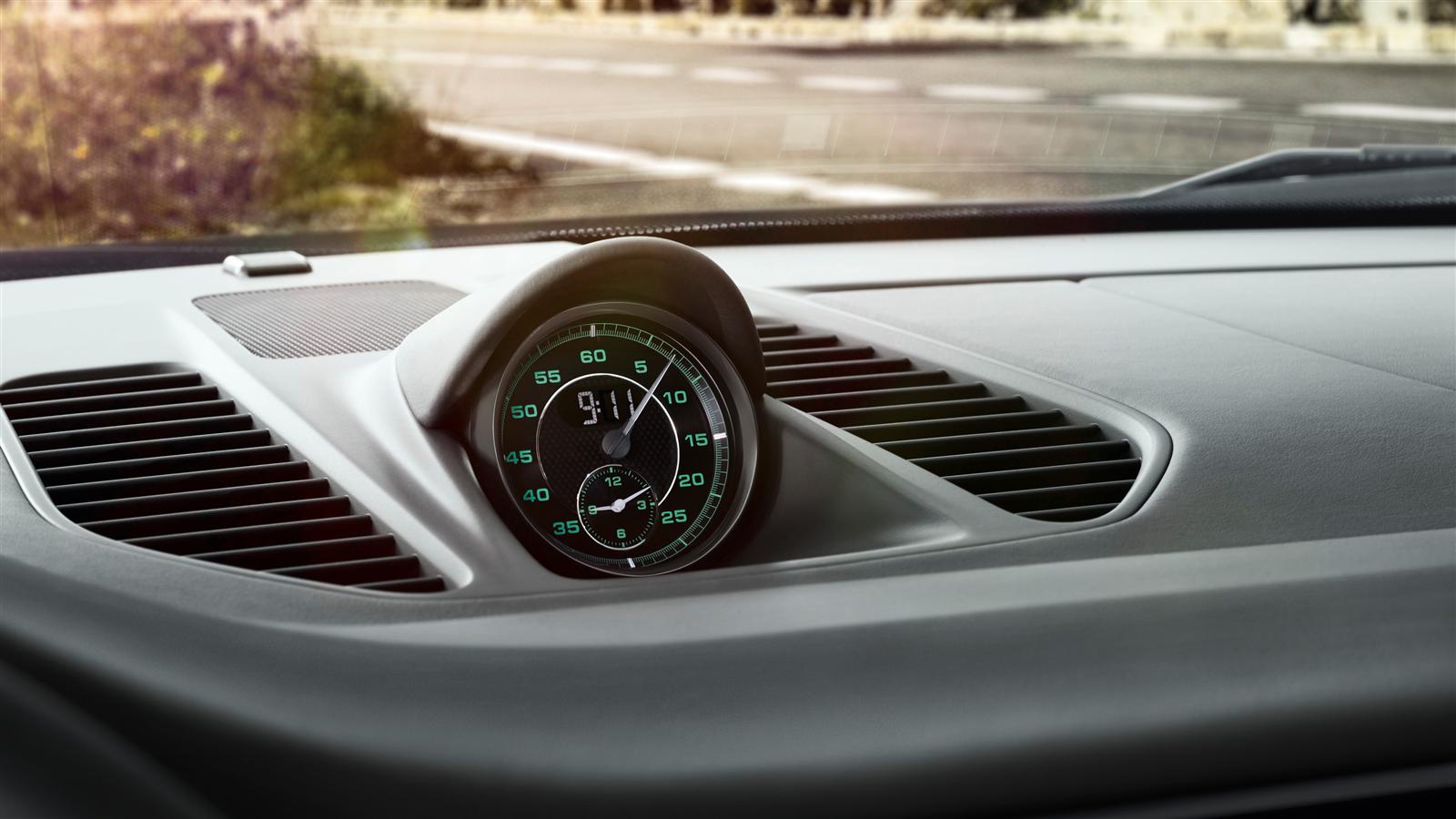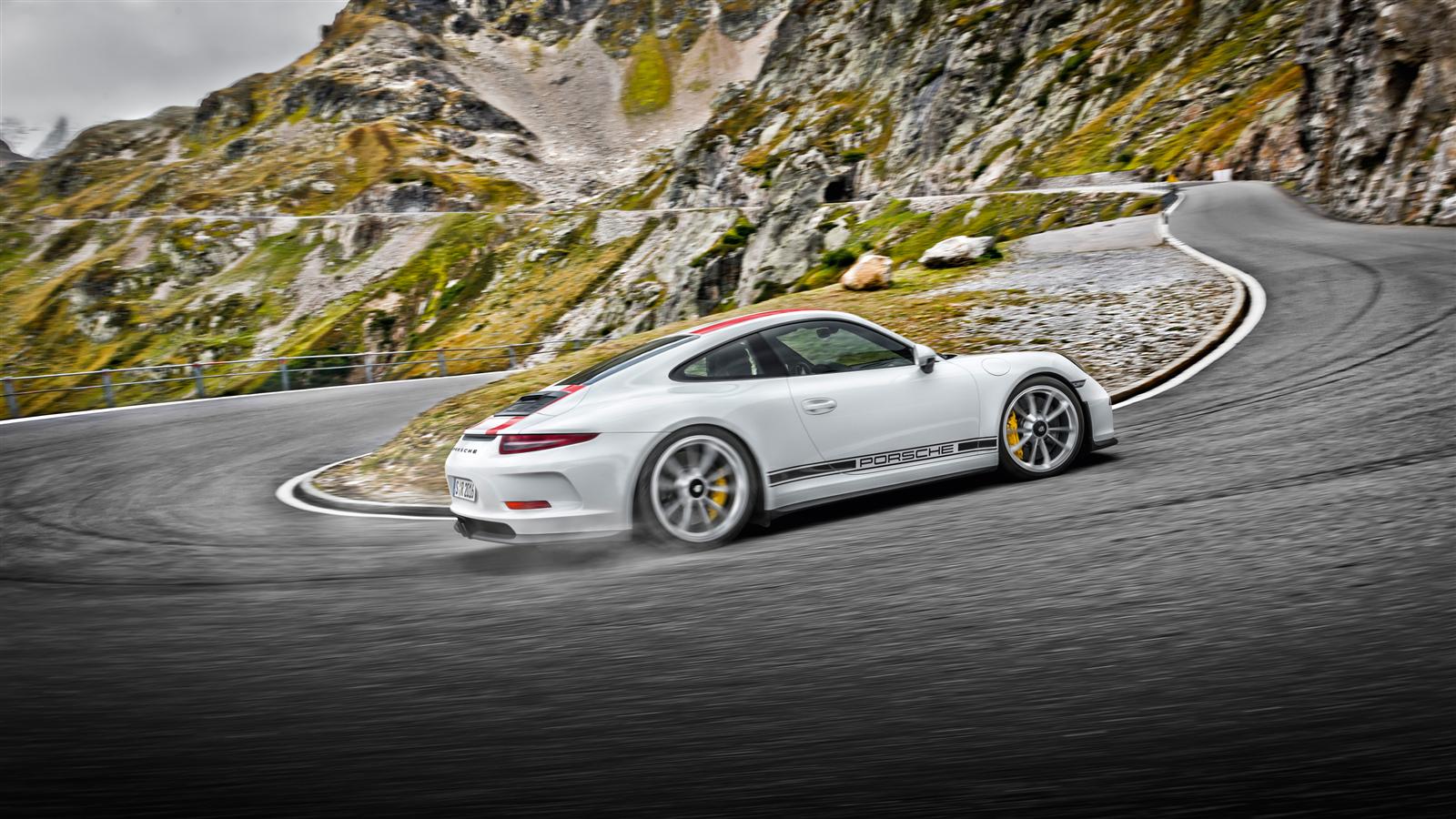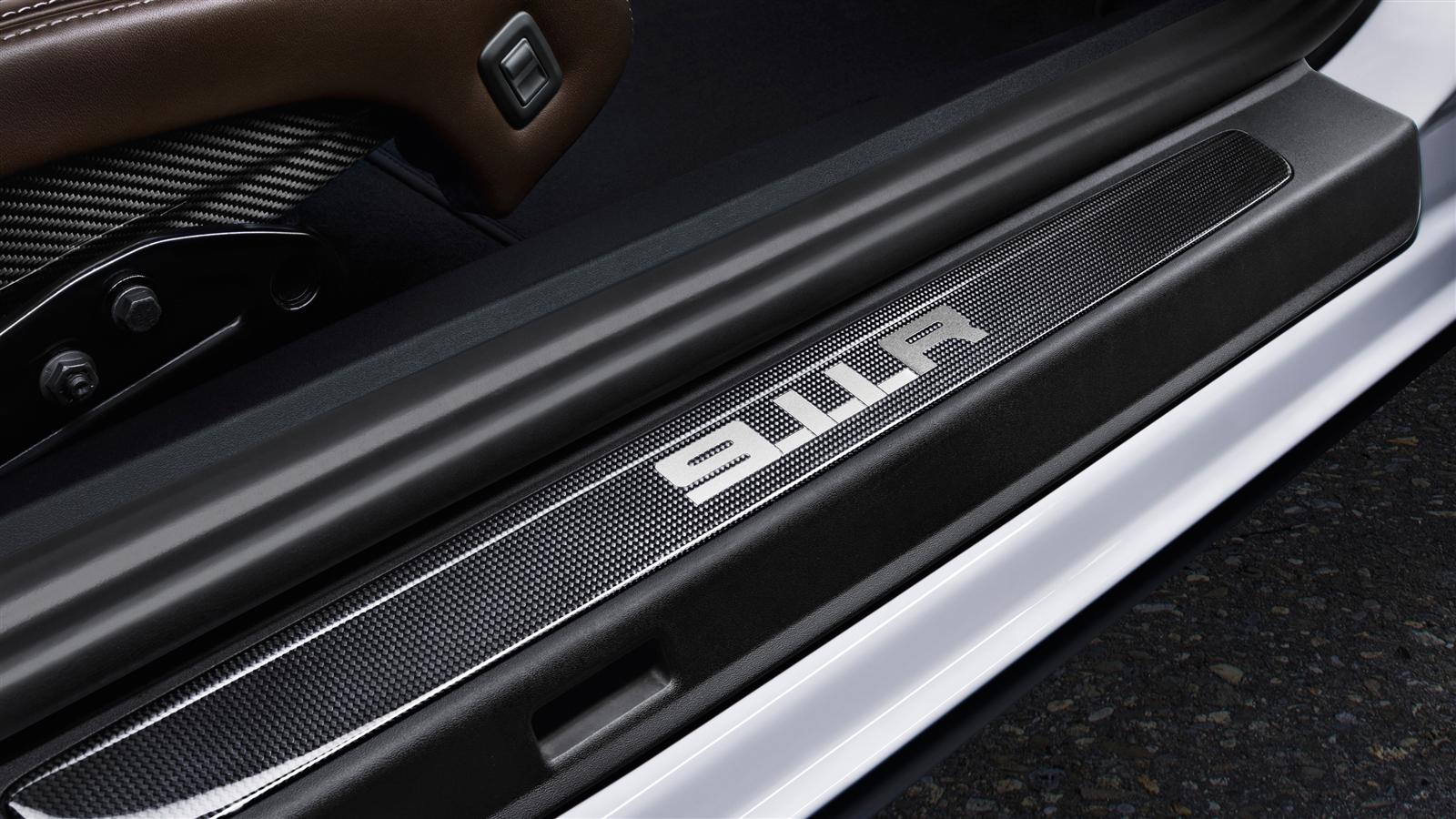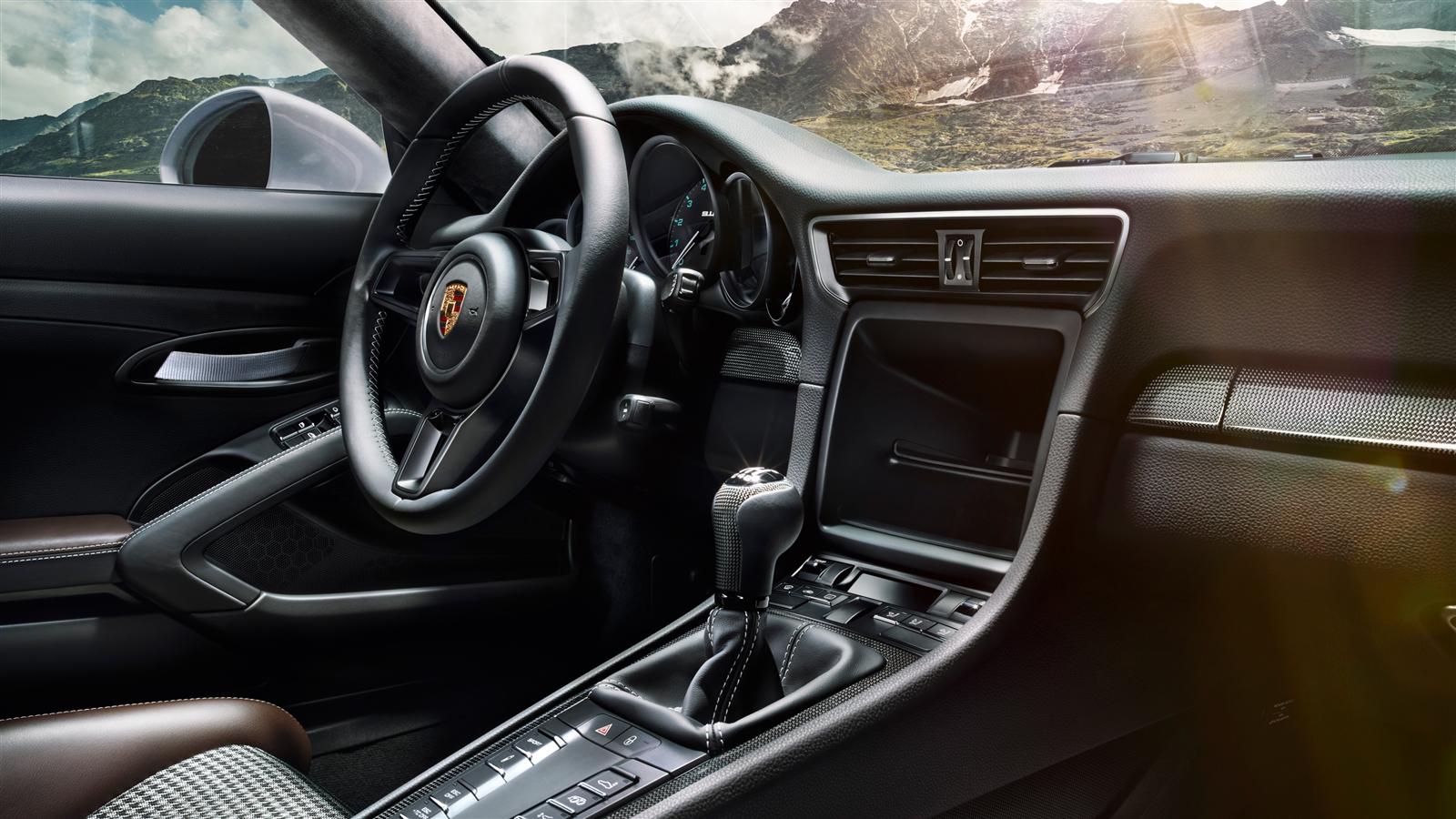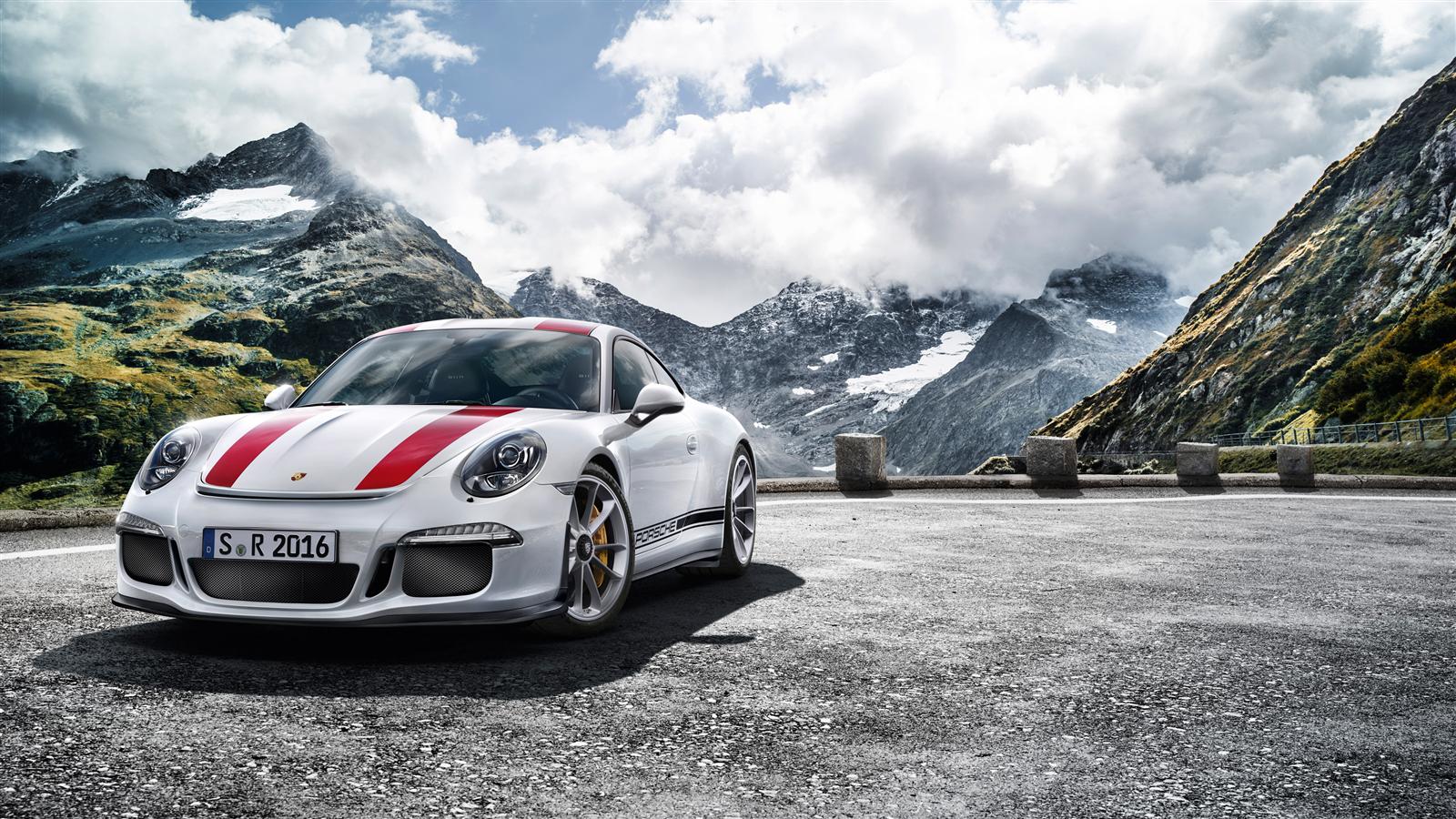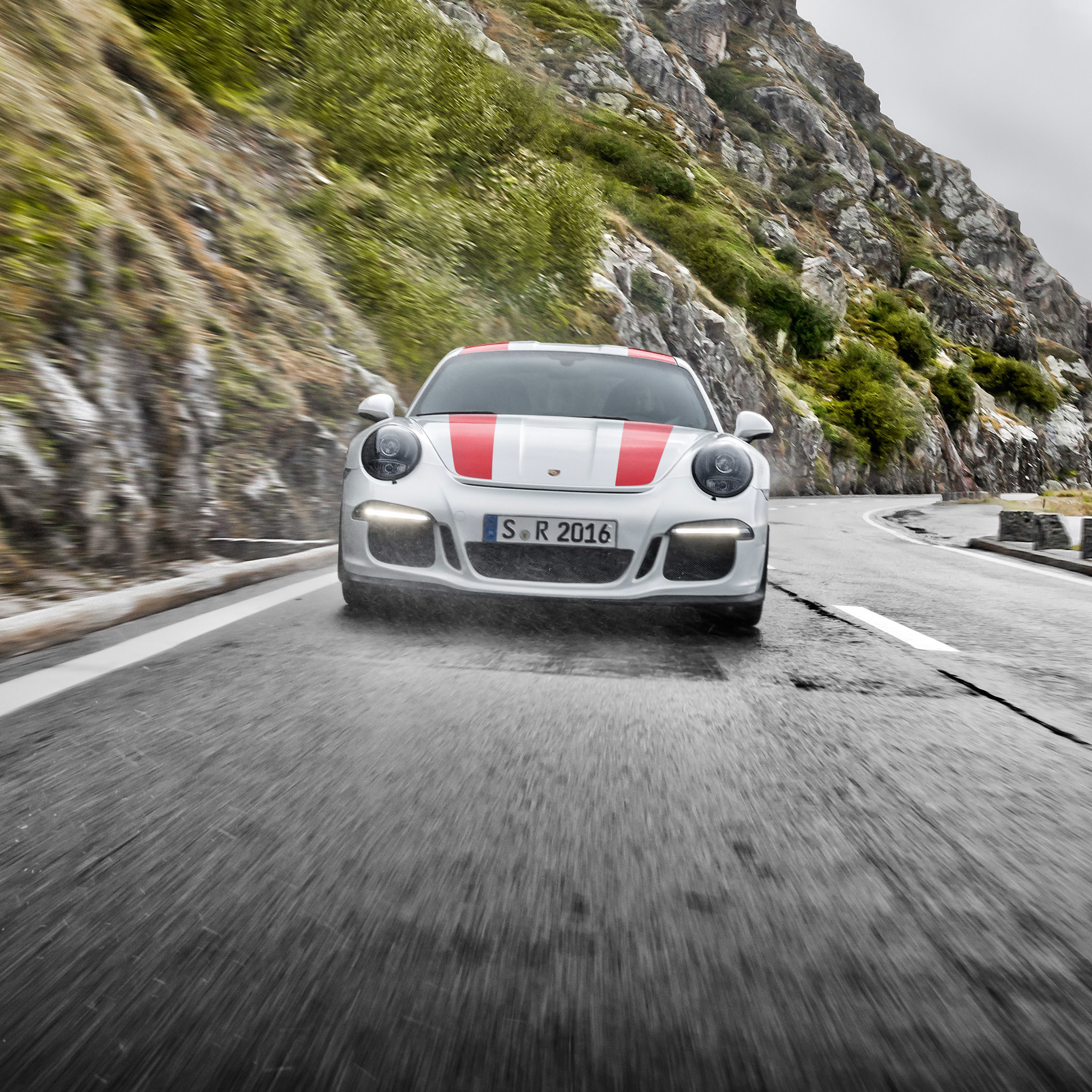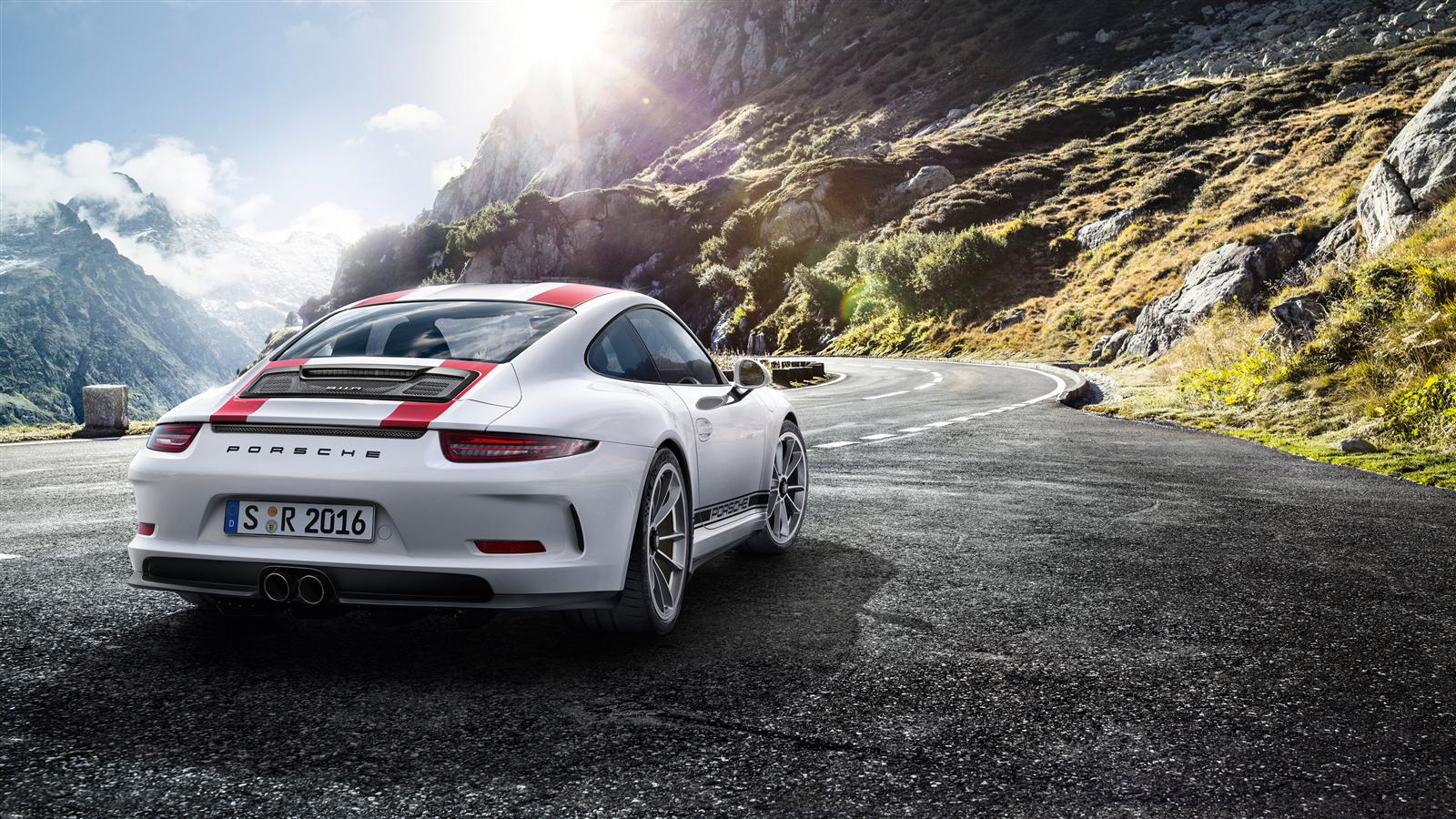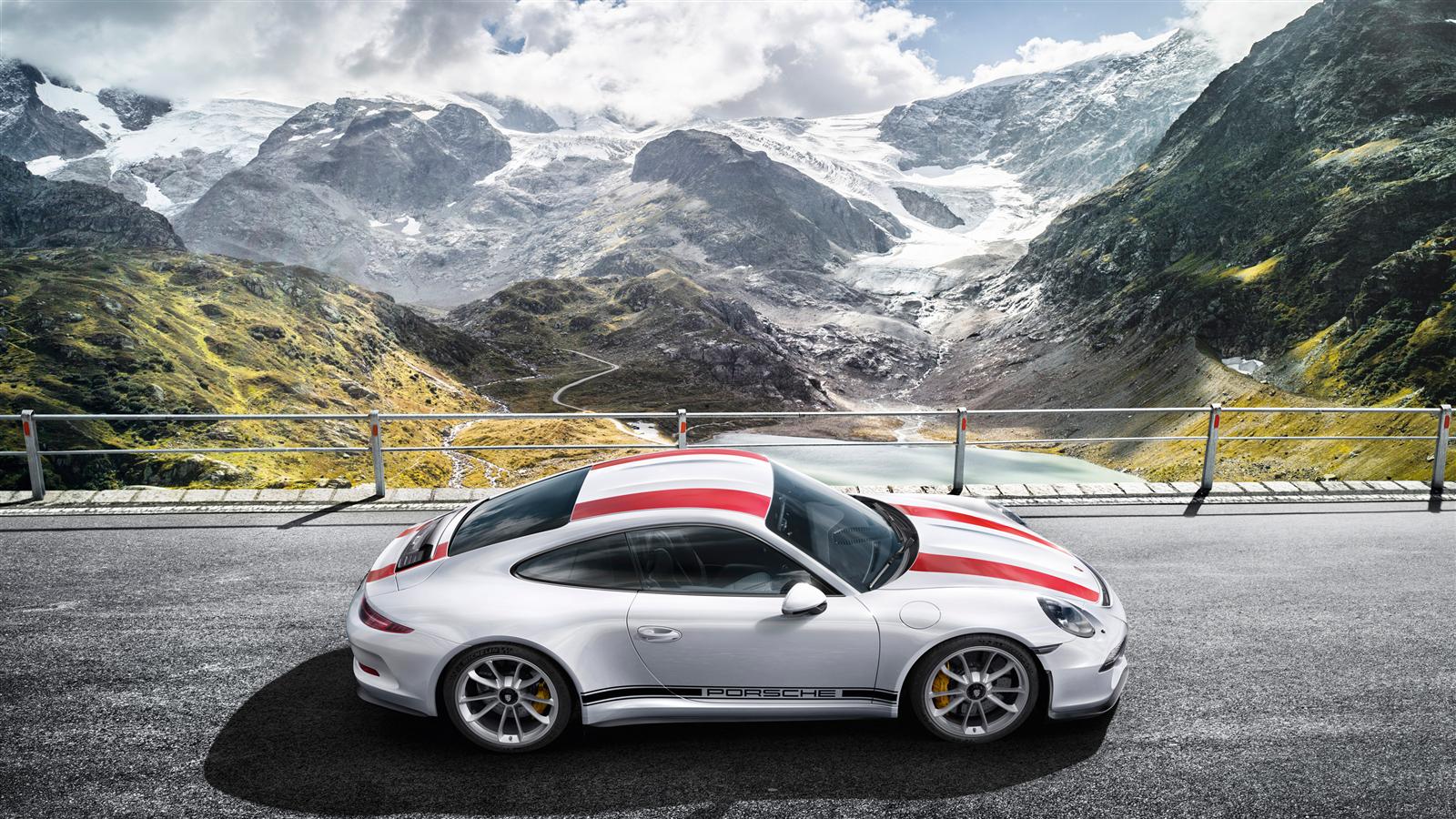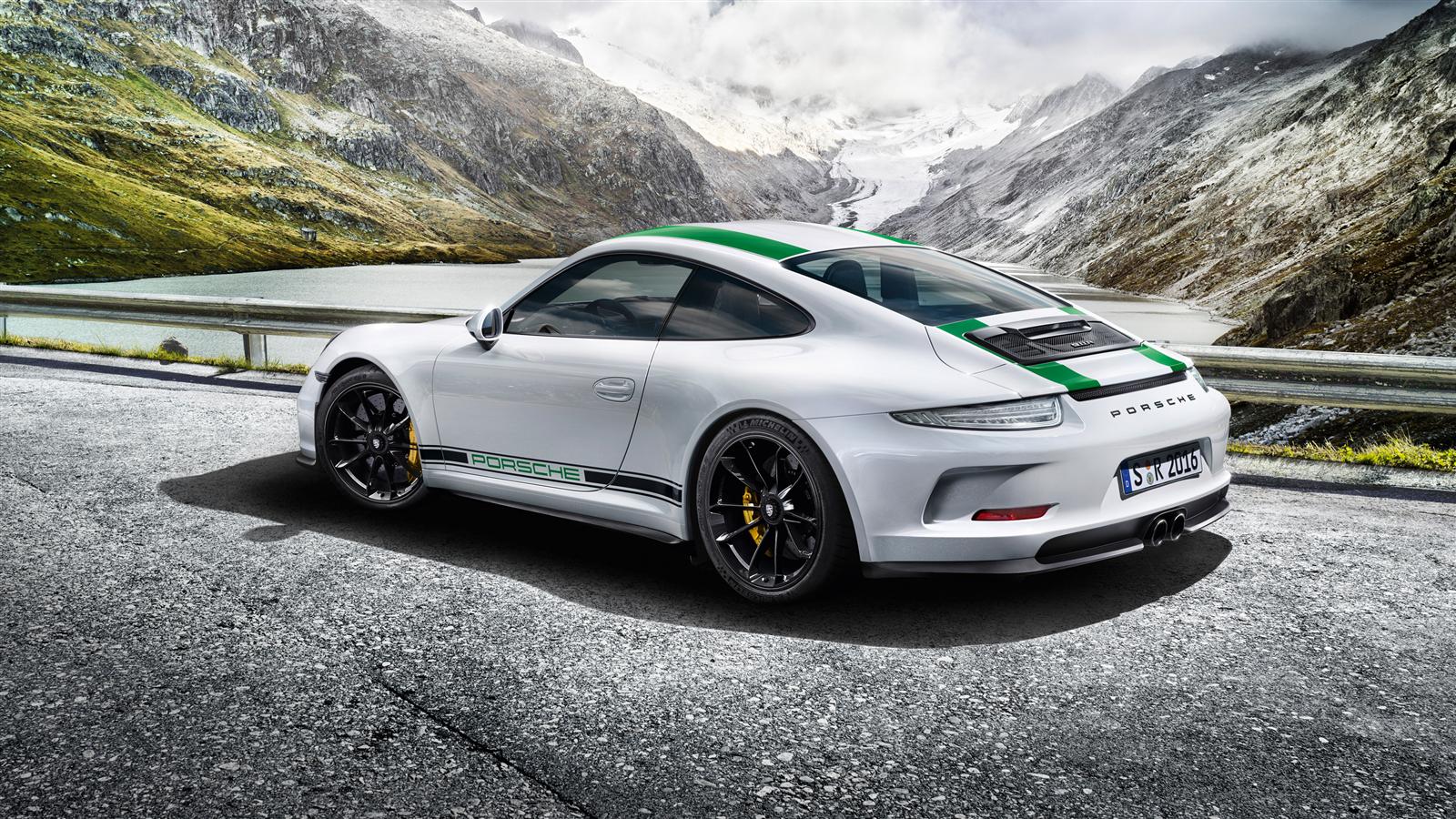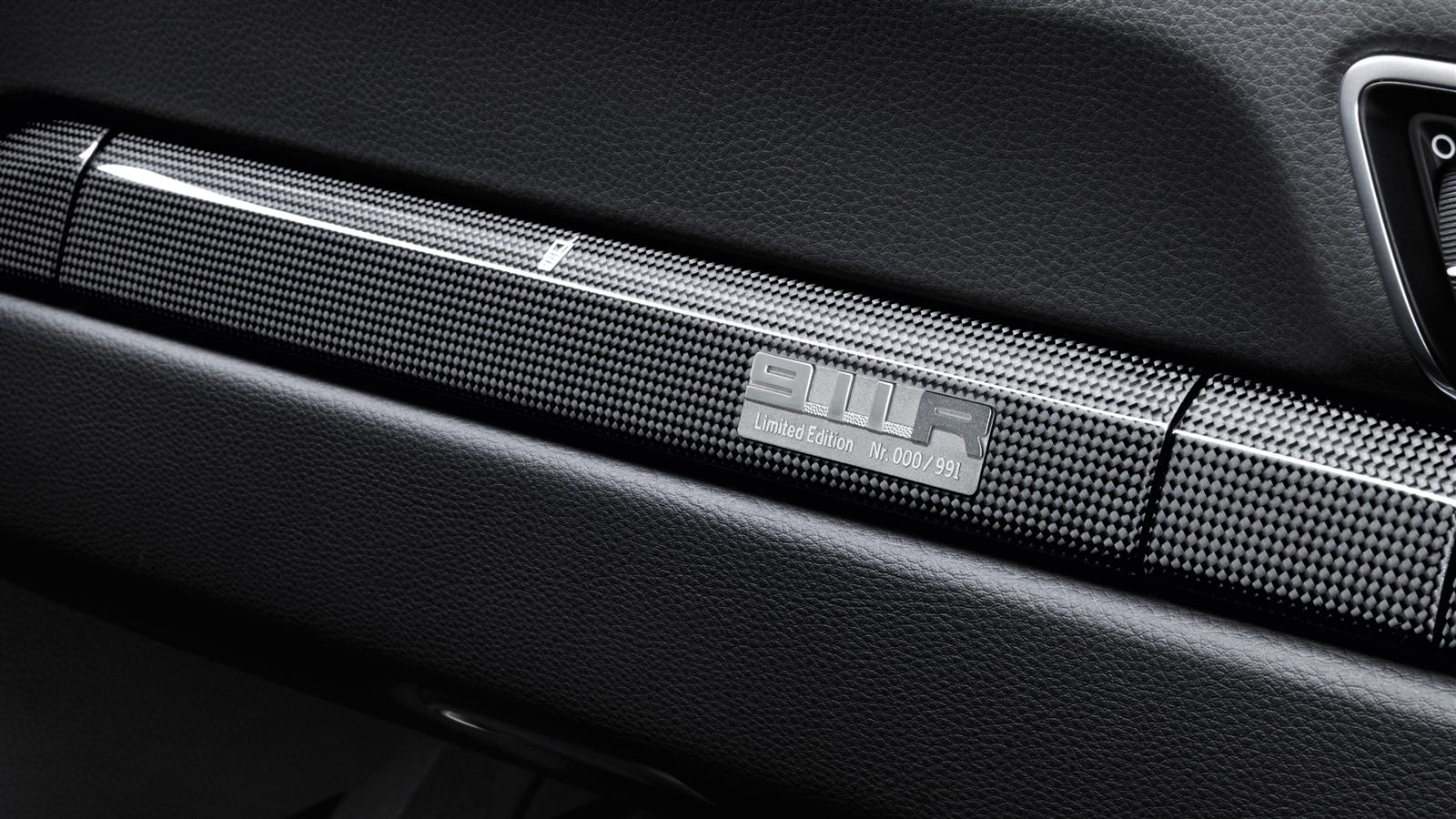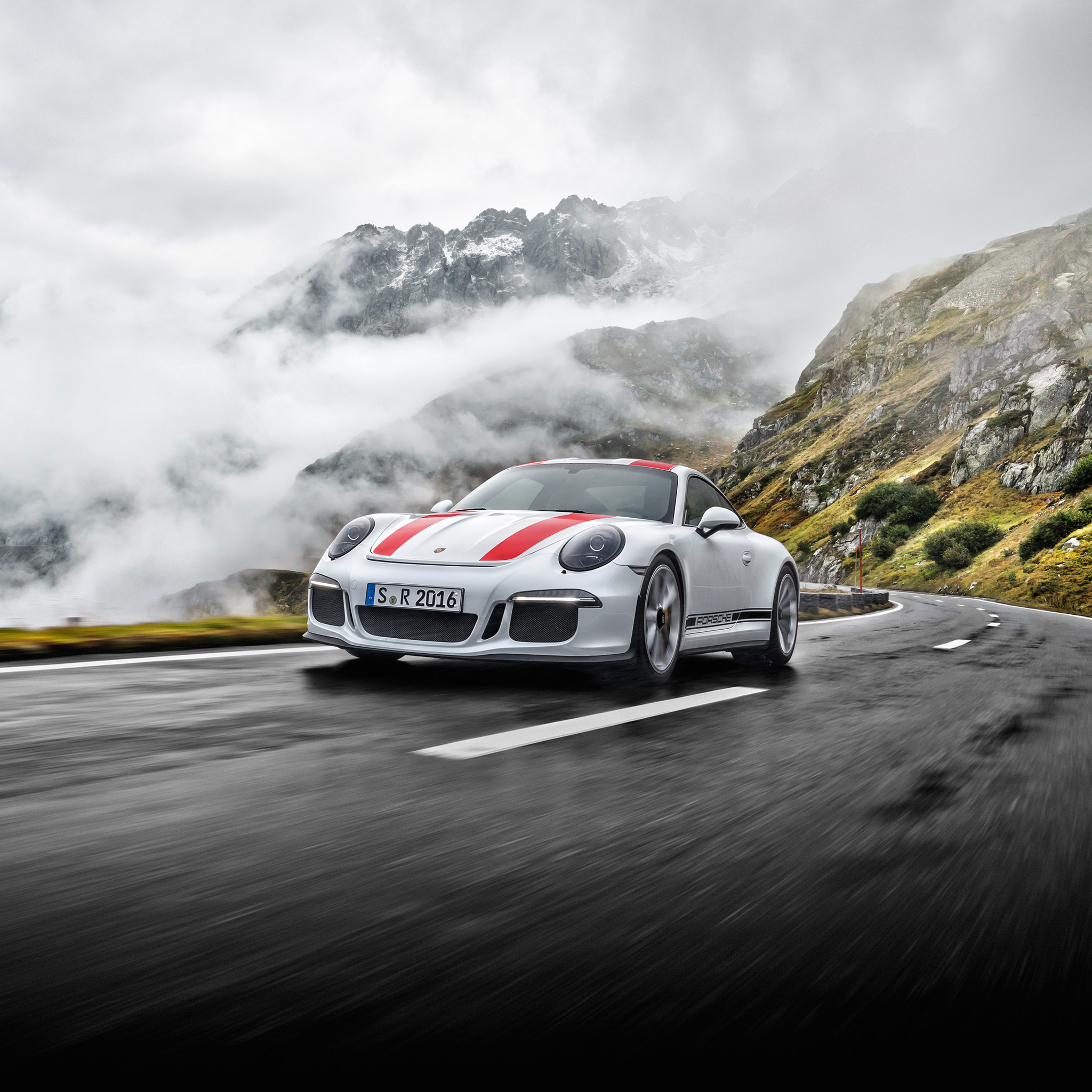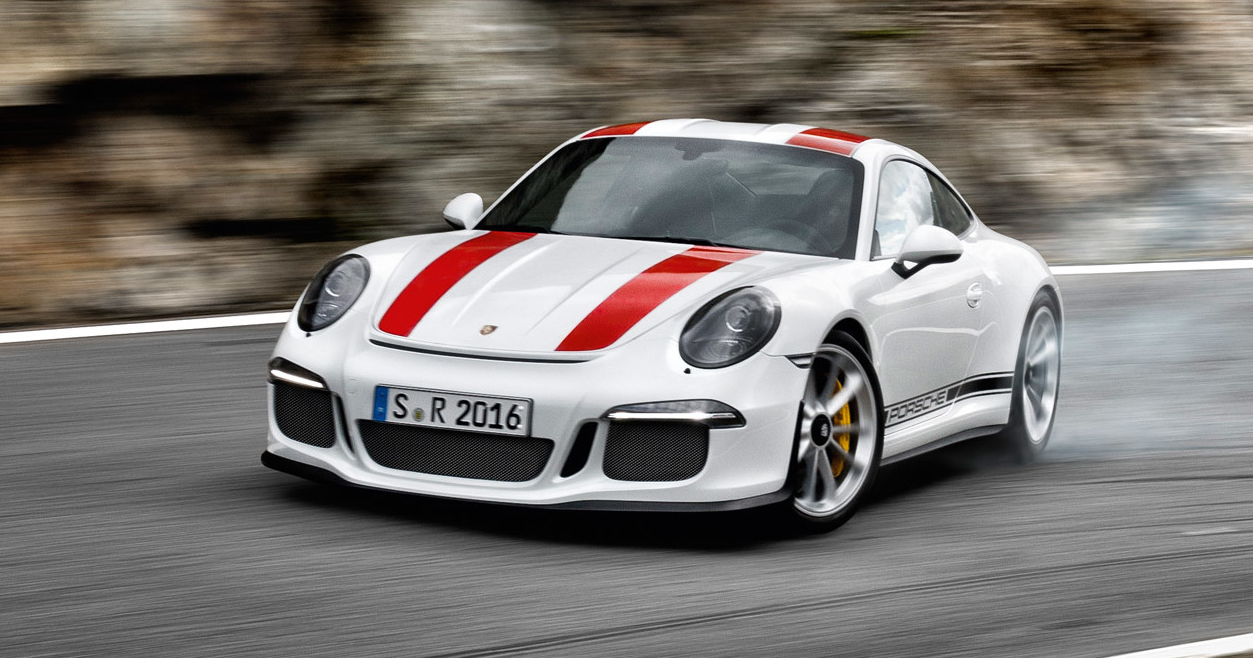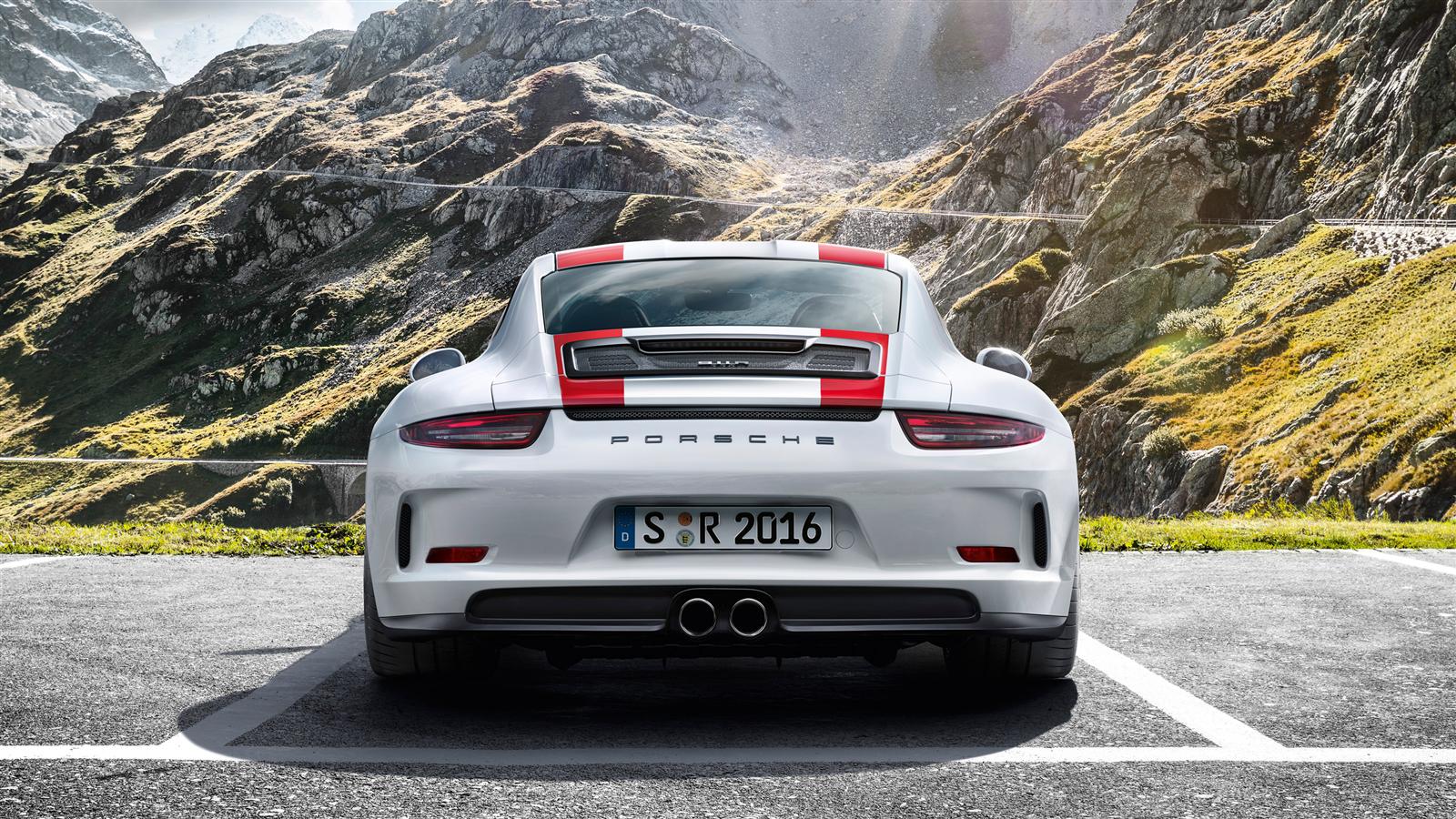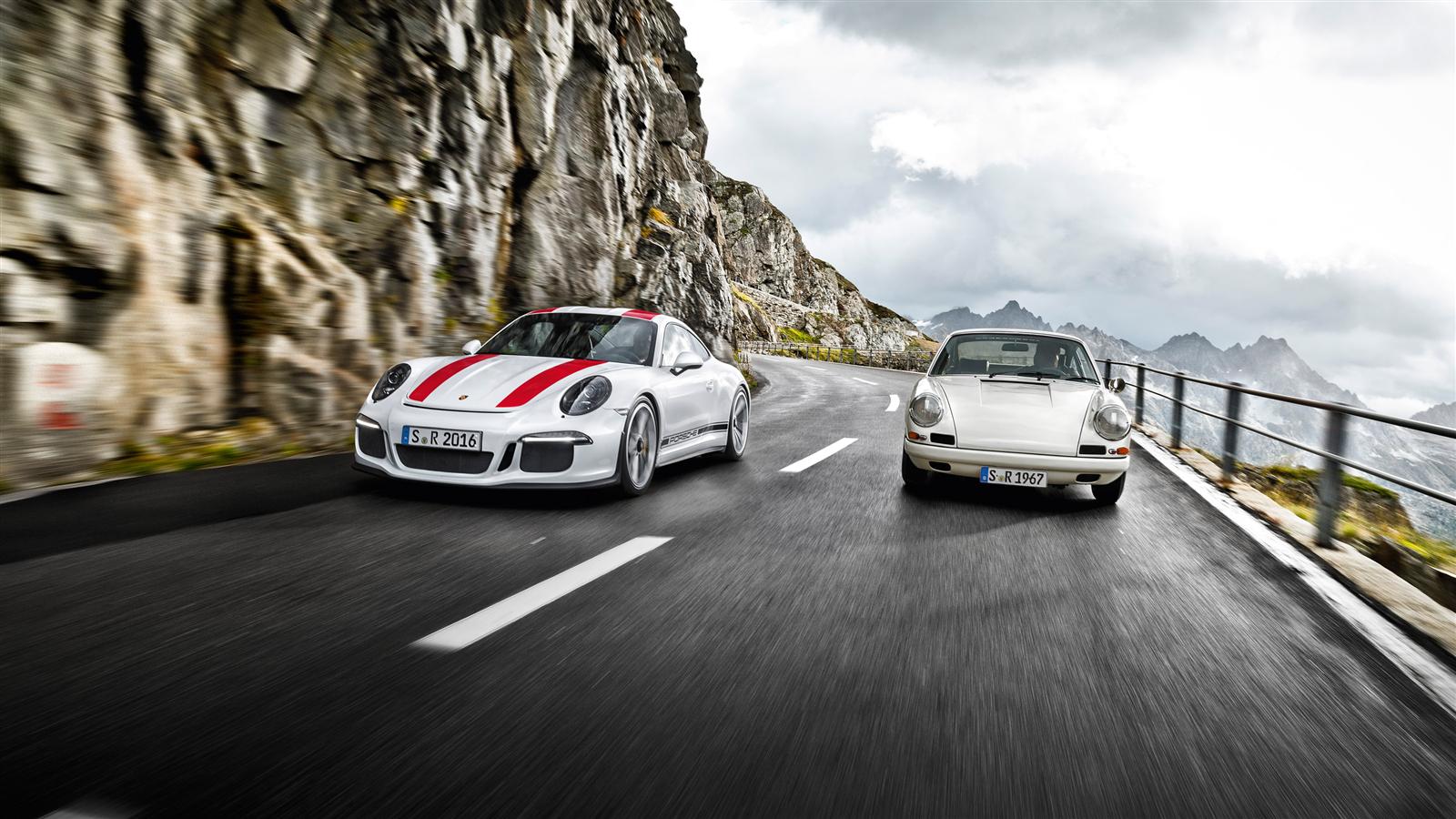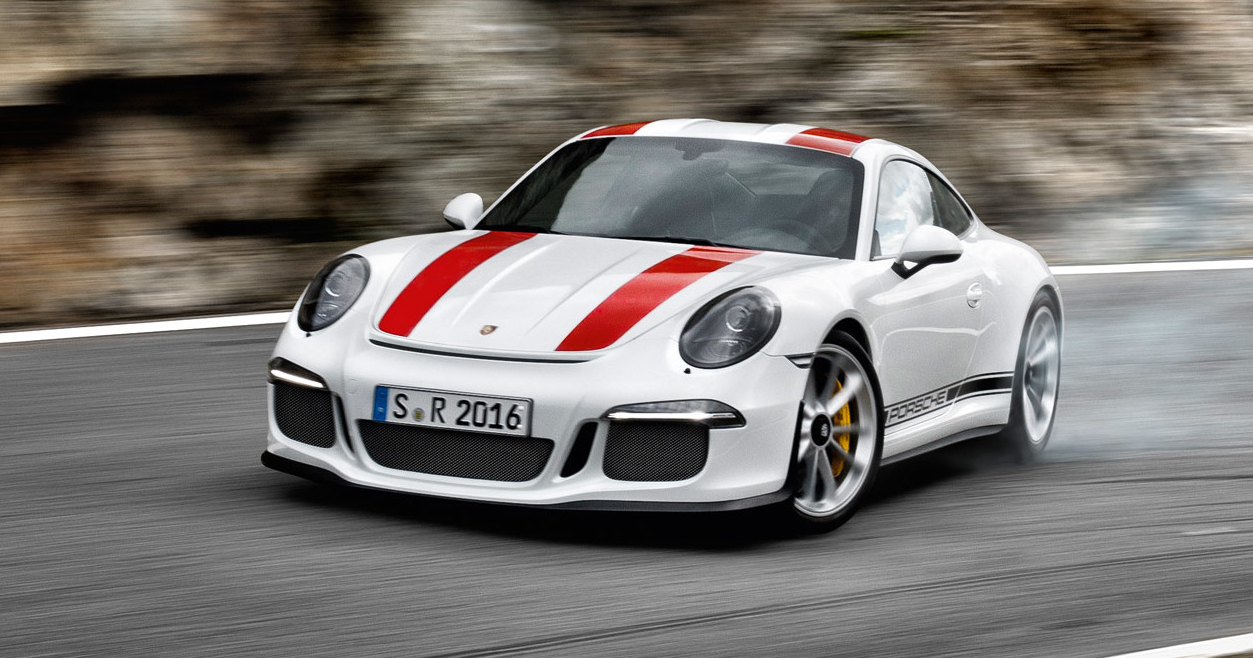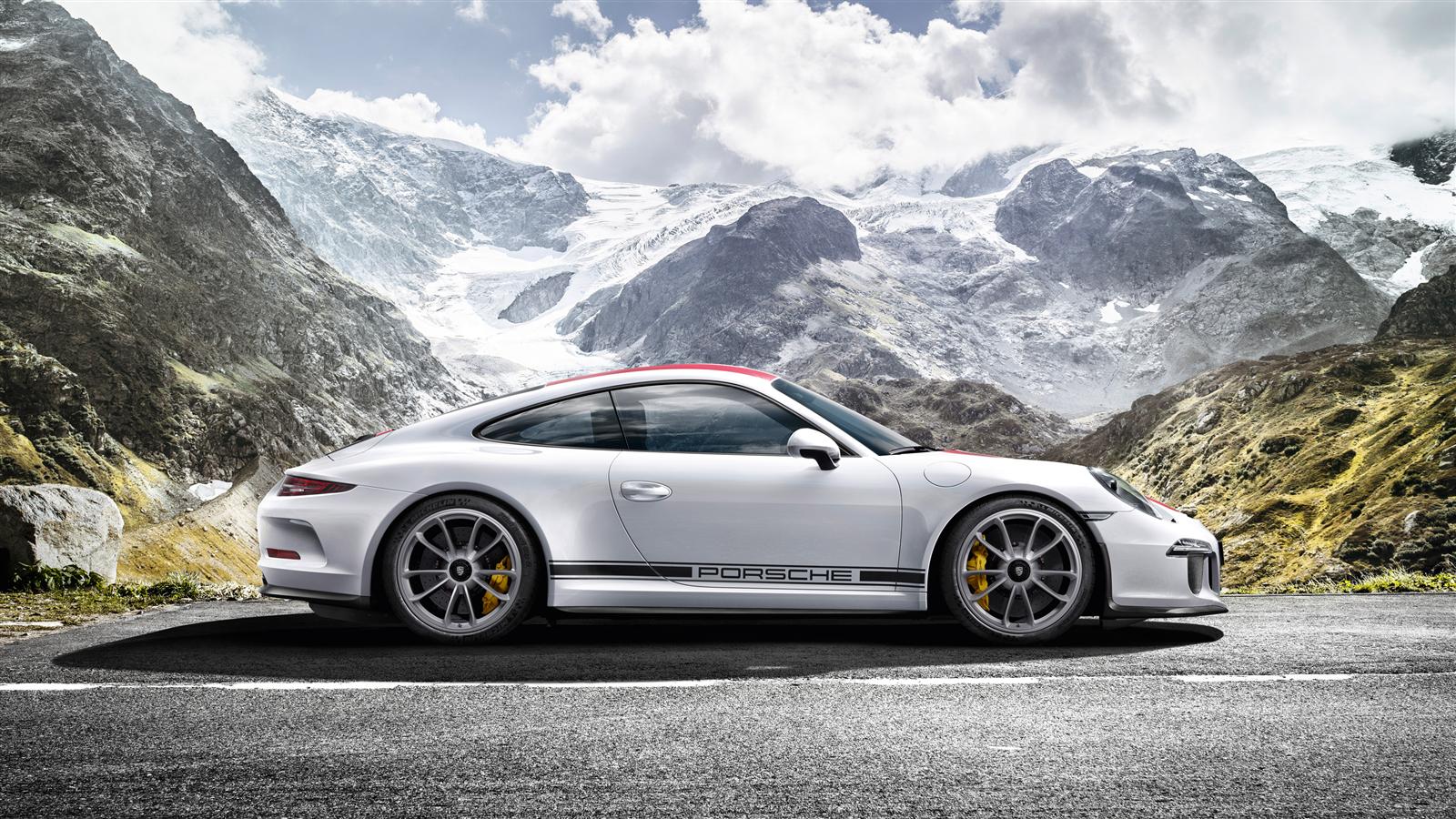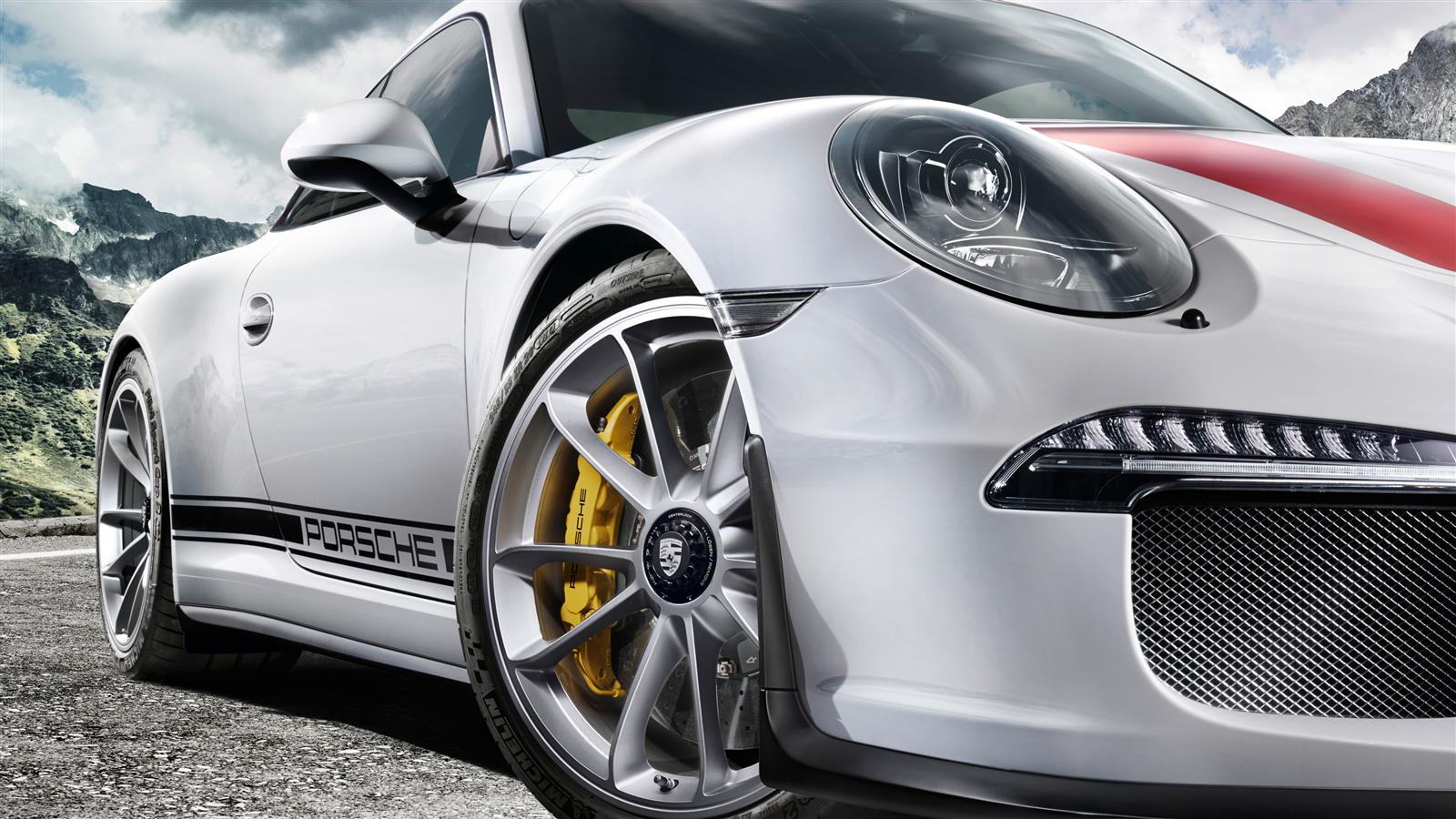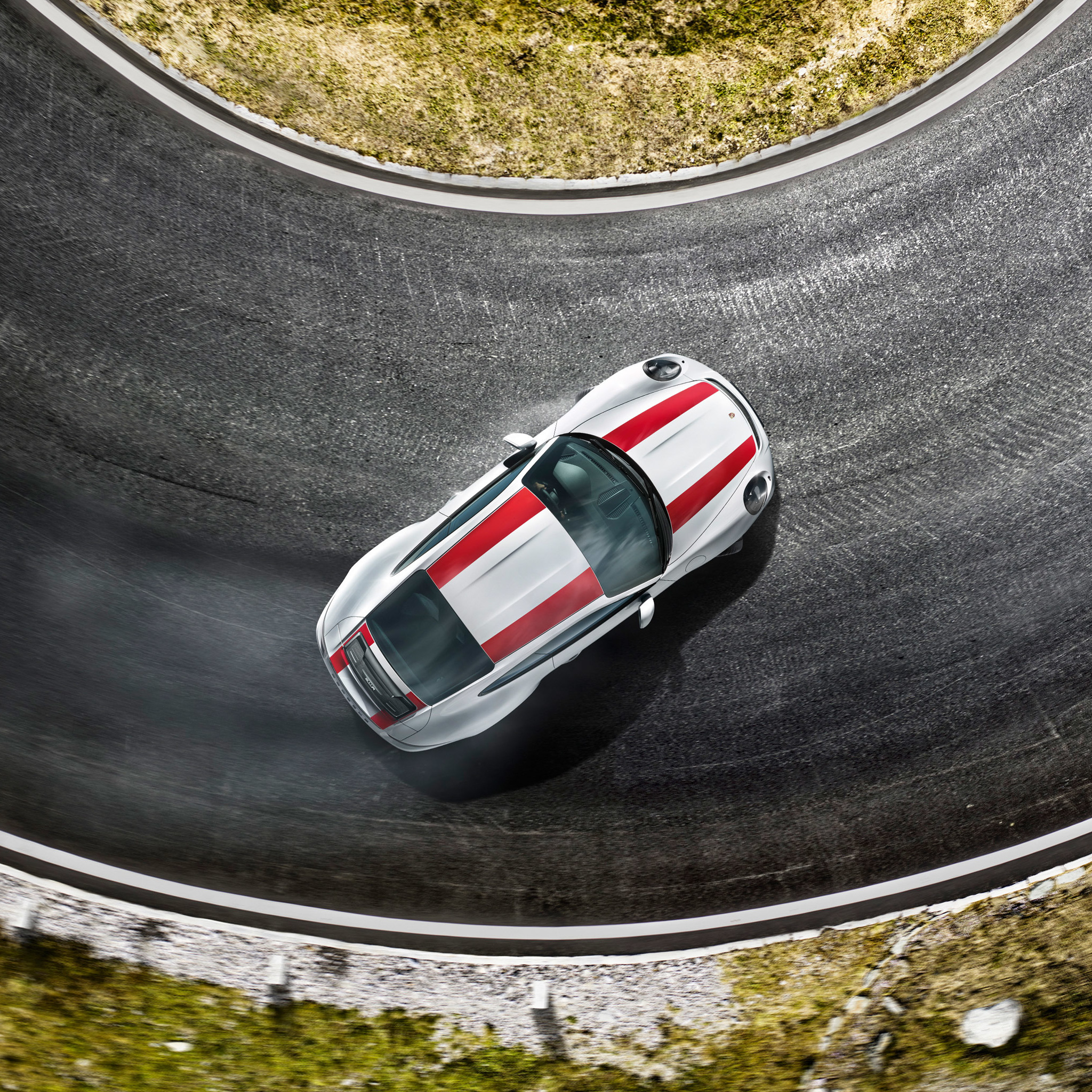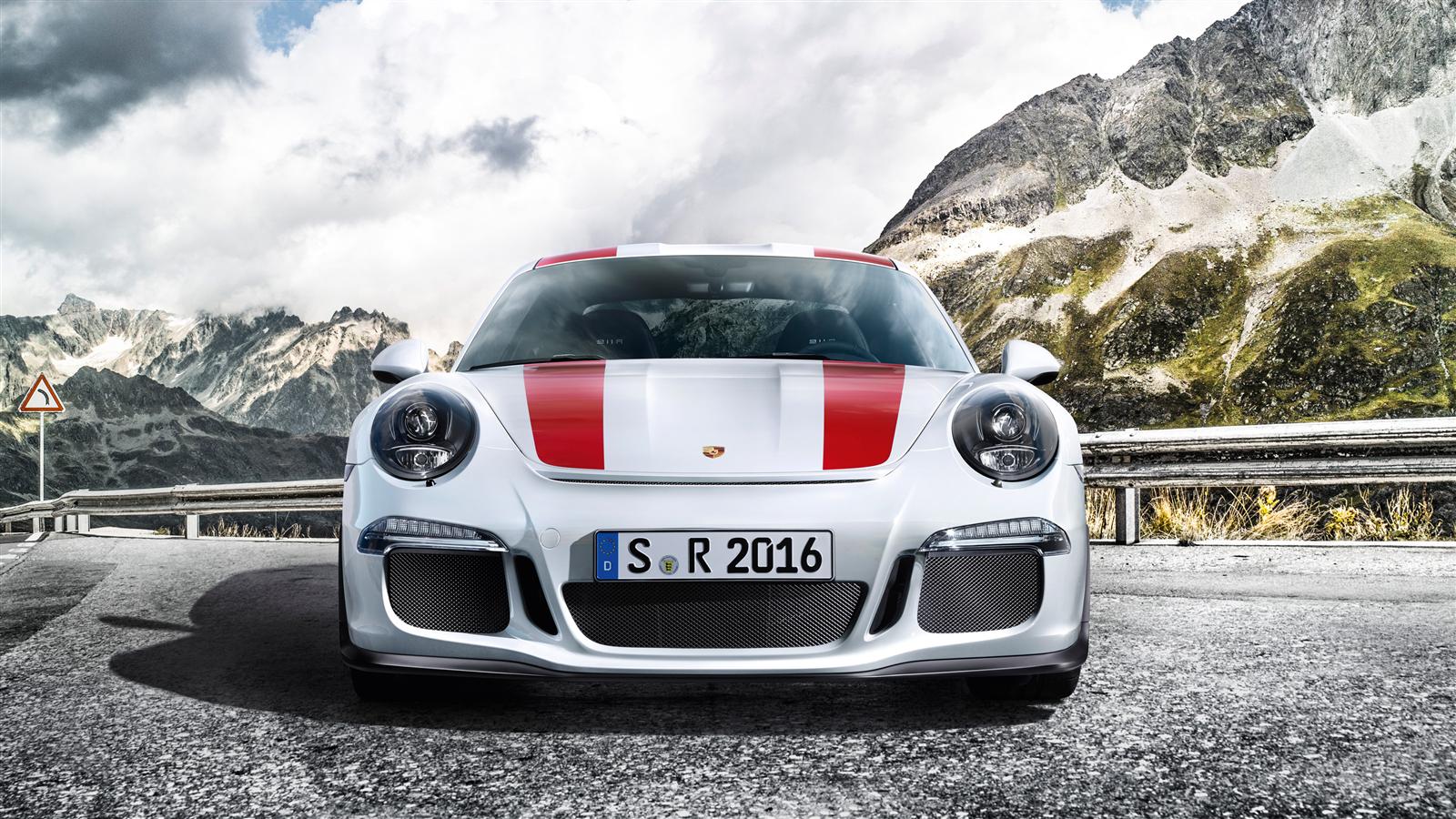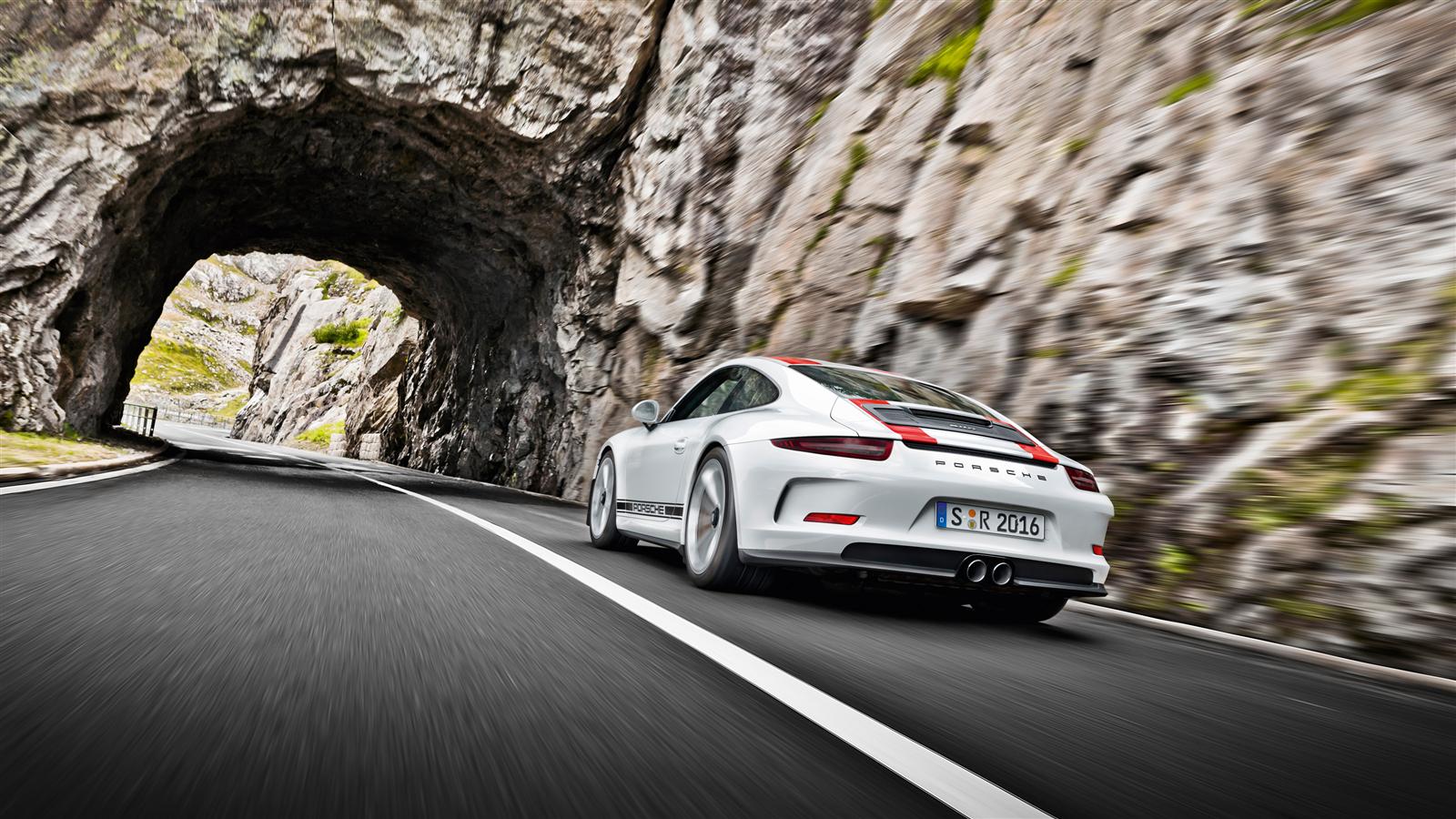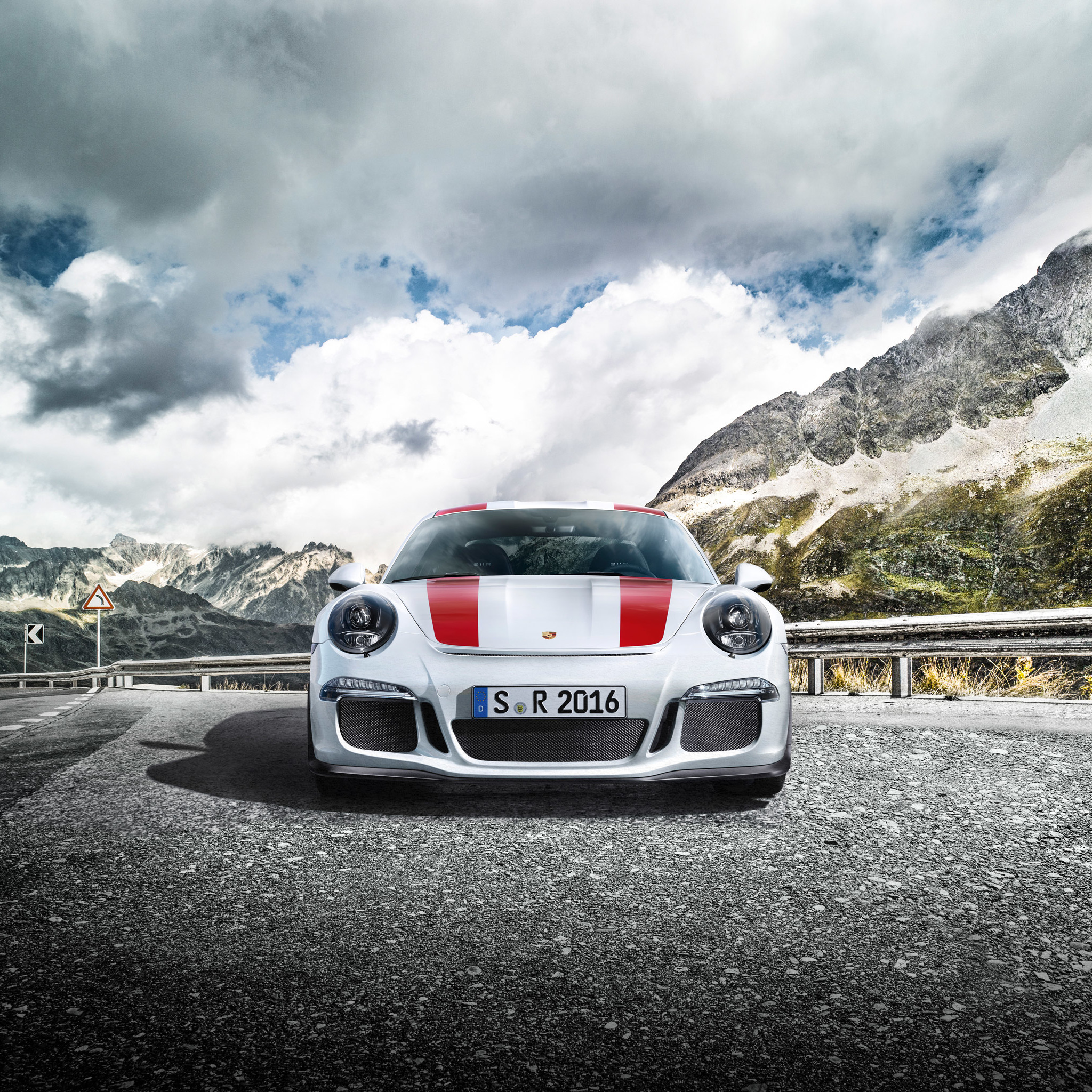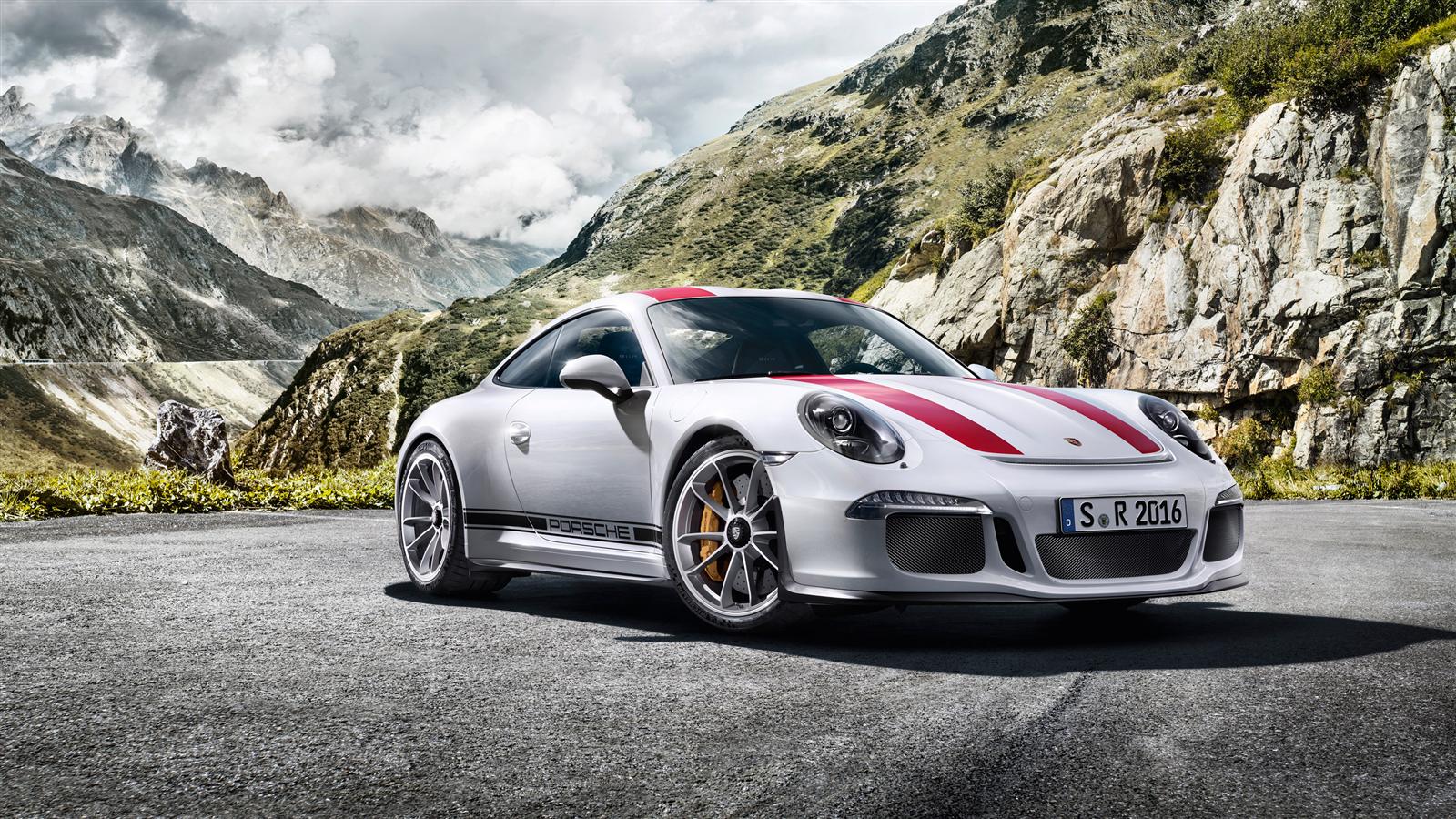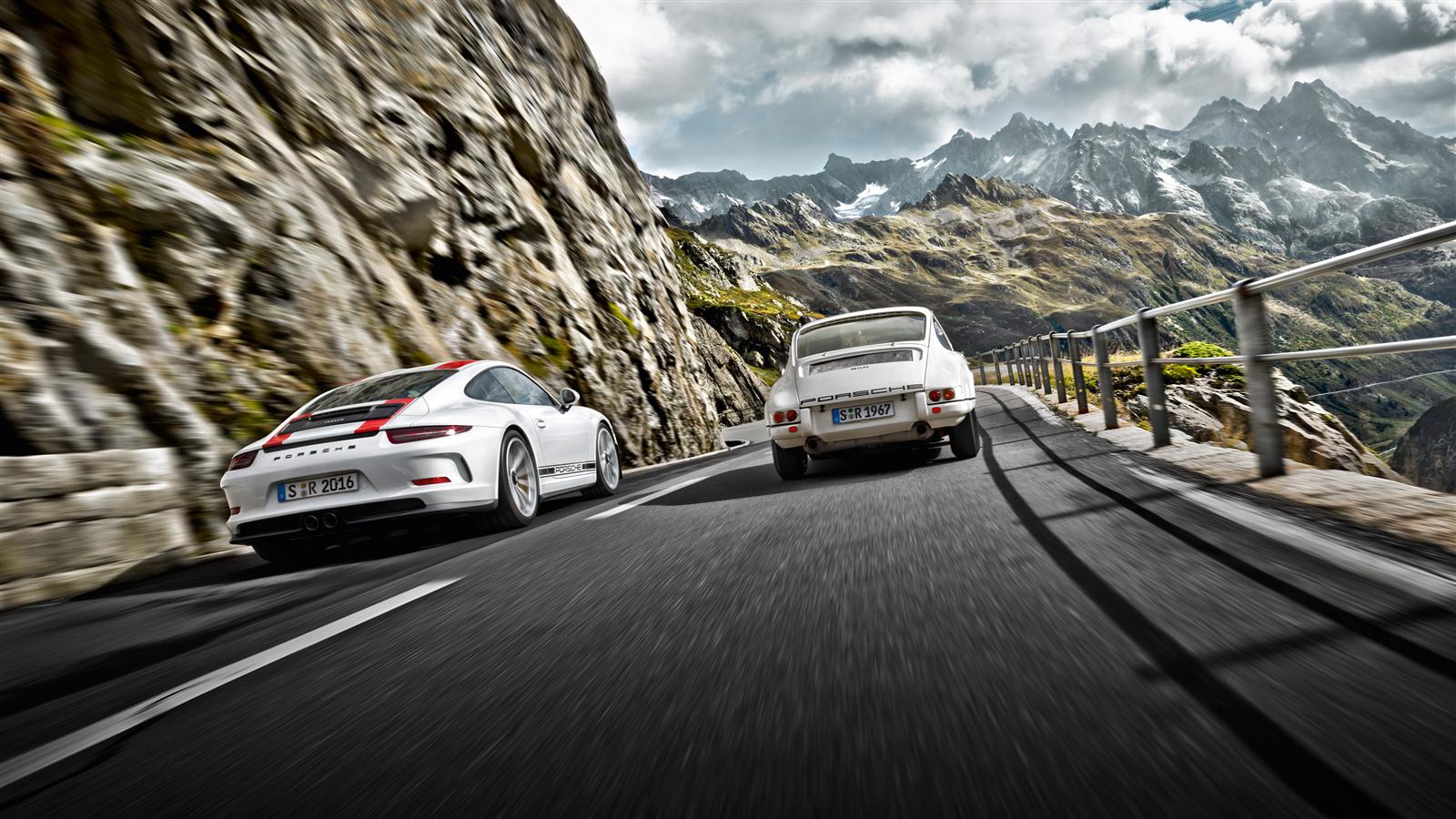Porsche 911 R
The original Porsche 911 R was built specifically for motor racing in 1967. Making the car lightweight was an obsession with bumpers, fenders, windows and more all made from light plastic. The car even had ventilation slots in the rear side windows and all trim panels, carpets, sun visor, footrests and superfluous instruments were stripped out. The result was an 800 kg (1764 lb) car with the iconic air-cooled flat-six naturally aspirated engine with 154 kW (210 hp). This 911 R was powerful, extremely fast and way ahead of its rivals at the time.
In 2017, the Porsche 911 R is back and we’re very happy campers. Think of it as a manual GT3 RS and you’re pretty close. The limited edition (991 units will be made) sounds like the perfect Porsche on paper with its 500 hp 4.0-liter naturally aspirated flat-six engine, 6-speed GT sport manual transmission, exotic lightweight materials and lots of cool Porsche motorsports tech thrown in.
This isn’t the fastest 911. It is designed to be a sports car, something you can enjoy driving even if you’re not wringing it’s neck out or trying to break lap records. It is refreshing. As much as the current GT3 and GT3 RS are epic cars, they’re not much fun or approachable on real roads. The Porsche 911 R is much more than that. It is the kind of car you take when you want to hit some mountain passes or some back roads to let off some steam.
Porsche 911 R Highlights
Flat-six naturally aspirated engine. Screw turbocharging, this is what engines should be like. Naturally aspiration and large-volume flat-six engines will always have a place in our hearts. This masterpiece takes it to an even higher level. From its 4-liter displacement it delivers 500 hp (specific output of 125 hp per liter). Maximum torque is 346 lb.-ft and it revs to a stratospheric 8,800 rpm.
6-speed GT sport manual transmission. A high performance Porsche with a 6-speed manual gearbox. As if that wasn’t enough, the precise manual transmission also includes a cool rev-matching function. The focus of the box is not on shaving tenths of a second off lap times on the Nordschleife, but on pure driving pleasure and unfiltered emotion. This is Porsche driving the way it used to be.
Lightweight materials. Carbon fiber-reinforced plastic can be found everywhere (luggage compartment lid, fenders and more). The roof is made from magnesium.
The climate control and infotainment system have been removed. No back seats. Lightweight door panels with door opener loops and insulation removed. Total weight down to 3,021 lbs.
Porsche Ceramic Composite Brake (PCCB). The crucial advantage of the ceramic brake system is its extremely low weight and fade free stopping power. The Porsche gets cross-drilled ceramic brake discs (410 mm at the front and 390 mm at the back). Coupled with cool looking (and effective) yellow six-piston aluminum monobloc fixed calipers on the front axle and four-piston aluminum monobloc fixed calipers on the rear axle this car stops as fast as it goes. That’s a good thing.
Chassis and Motorsport Tech. The chassis of the new 911 R is based on the 911 GT3 and provides extremely sporty day-to-day driving. The tuning is extremely direct and the vehicle lies as low as the 911 GT3. All chassis control systems have been adapted to the manual transmission. The 911 R includes:
- Rear-axle steering
- Dynamic engine mounts
- Porsche Active Suspension Management (PASM – 30 mm)
- Porsche Stability Management (PSM)
- Porsche Torque Vectoring (PTV)
- 20-inch 911 GT3 wheels
Retro Interior design. Full bucket seats made from carbon fiber with cloth center section in houndstooth checkered pattern. With its lightweight construction and purism, the new 911 R honors its historical role model. The sport steering wheel in leather features a black 12-o’clock marking. The instruments evoke the Porsche design of the 1960s, when the digits and increment markings were green and the pointers were white. The 911 R logo on the tachometer is adapted from the historic 911 R. The carbon fiber trim strips embody the lightweight construction theme. And the limited edition badge on the trim strip above the glove compartment symbolizes the uniqueness of the vehicle. The characteristic Brown leather has retained its natural texture with grains and irregularities.
Porsche 911 R Photos
Porsche 911 R Videos
See more Porsche videos.
Official Porsche 911 R Press Release:
With its new 911 R, Porsche is unveiling a puristic sports car in classical design at the 2016 Geneva International Motor Show. Its 368 kW (500 hp) four-litre naturally aspirated flat engine and six-speed sports transmission places the 911 R firmly in the tradition of its historic role model: a road-homologated racing car from 1967. Produced as part of a limited production series, the 911 R (R for Racing) performed in rallies, in the Targa Florio and in world record runs. Like its legendary predecessor, the new 911 R relies on systematic lightweight construction, maximum performance and an unfiltered driving experience: this special limited-edition model of 991 units has an overall weight of 1,370 kilograms and is currently the lightest version of the 911. With the high-revving six-cylinder naturally aspirated engine and manual sports transmission, Porsche is once again displaying its commitment to especially emotional high-performance sports cars. Developed in the motorsport workshop, the 911 R extends the spectrum of high-performance naturally aspirated engines alongside the motor racing models 911 GT3 and 911 GT3 RS.
At work in the rear of the 911 R is the six-cylinder flat engine with a displacement of four litres, familiar from the 911 GT3 RS. The racing engine delivers 500 hp at 8,250 rpm and generates 460 Nm at a speed of 6,250 rpm. From a standing start, the rear-engined car breaks through the 100 km/h barrier in 3.8 seconds. In keeping with the puristic character of the vehicle, the 911 with its lightweight design is available exclusively with a six-speed sports transmission. Short gearshift travel underlines the active driving experience. The forward thrust of the 911 R continues to a speed of 323 km/h. Combined fuel consumption in the NEDC is 13.3 l/100 km.
A thoroughbred driving machine: technology from the race track
The 911 R could almost have been made for tight corners. The specially tuned standard rear-axle steering guarantees especially direct turn-in characteristics and precise handling while maintaining high stability. The mechanical rear differential lock builds up maximum traction. Ensuring the greatest possible deceleration is the Porsche Ceramic Composite Brake (PCCB) as a standard feature. It measures a generous 410 millimetres on the front axle and 390 millimetres on the rear. Ultra High Performance Tyres of size 245 millimetres at the front and 305 millimetres at the rear are responsible for contact to the road. They are mounted on forged 20-inch lightweight wheels with central lock in matt aluminium.
Motorsport development has specially adapted the control systems of the Porsche Stability Management (PSM) for the 911 R. A double-declutch function activated by pressing a button for perfect gearshifts when changing down is also part of the repertoire of the 911 R as is the optional single-mass flywheel. The result is a significant improvement in spontaneity and high-revving dynamics of the engine. For unrestricted practicality in everyday use, a lift system can also be ordered: it raises ground clearance of the front axle by approximately 30 millimetres at the touch of a button.
With its overall weight of 1,370 kilograms, the 911 R undercuts the 911 GT3 RS by 50 kilograms. Bonnet and wings are made of carbon and the roof of magnesium. This reduces the centre of gravity for the vehicle. Rear windscreen and rear side windows consist of lightweight plastic. Additional factors are the reduced insulation in the interior and the omission of a rear bench seat. The optional air conditioning system and the radio including audio system also fell victim to the slimming cure.
Wolf in sheep’s clothing: classic 911 look with GT motor racing technology
From the exterior, the 911 R gives a reserved impression. At first sight, the body resembles that of the Carrera. Merely the nose and rear body familiar from the 911 GT3 hint at the birthplace of the 911 R: namely the motorsport department in Flacht. In technical terms therefore, the 911 R has a lot to show under the bonnet: the drive technology comes from the 911 GT3 RS. All the lightweight components of the body and the complete chassis originate from the 911 GT3. However, with a view to road use, the body manages without the fixed rear wing. Instead, a retractable rear spoiler, familiar from the Carrera models, and a rear underbody diffuser specific to R models provide the necessary downforce. Front and rear apron come from the 911 GT3. The sports exhaust system consists of the lightweight construction material titanium. A redesigned spoiler lip is installed at the front. Porsche logos on the sides of the vehicle and continuous colour stripes in red or green over the entire mid-section of the vehicle show the relationship to its legendary predecessor.
The driver sits in a carbon full bucket seat with fabric centre panels in Pepita tartan design, recalling the first 911 in the 1960s. An “R-specific” GT sport steering wheel with a diameter of 360 millimetres receives steering commands from the driver. Gearshifts take place in traditional manner via an R-specific short gearshift lever and the clutch pedal. Carbon trim strips in the interior with an embedded aluminium badge on the front passenger’s side indicate the limited number of the 911 R. A typical feature of GT vehicles are the pull straps as door openers.
Porsche 911 R In Detail
| Engine | 4.0-liter flat-six naturally aspirated |
| Aspiration | Natural Aspiration |
| Horsepower | 500 hp at 8250 rpm |
| 0 – 60 mph | 3.7 sec |
| Top Speed | 200 mph |
| Price | from MSRP $ 184,900 |
| Transmission | 6-speed GT sport manual transmission |
| Weight to Power Ratio | 6.0 lbs/hp |


